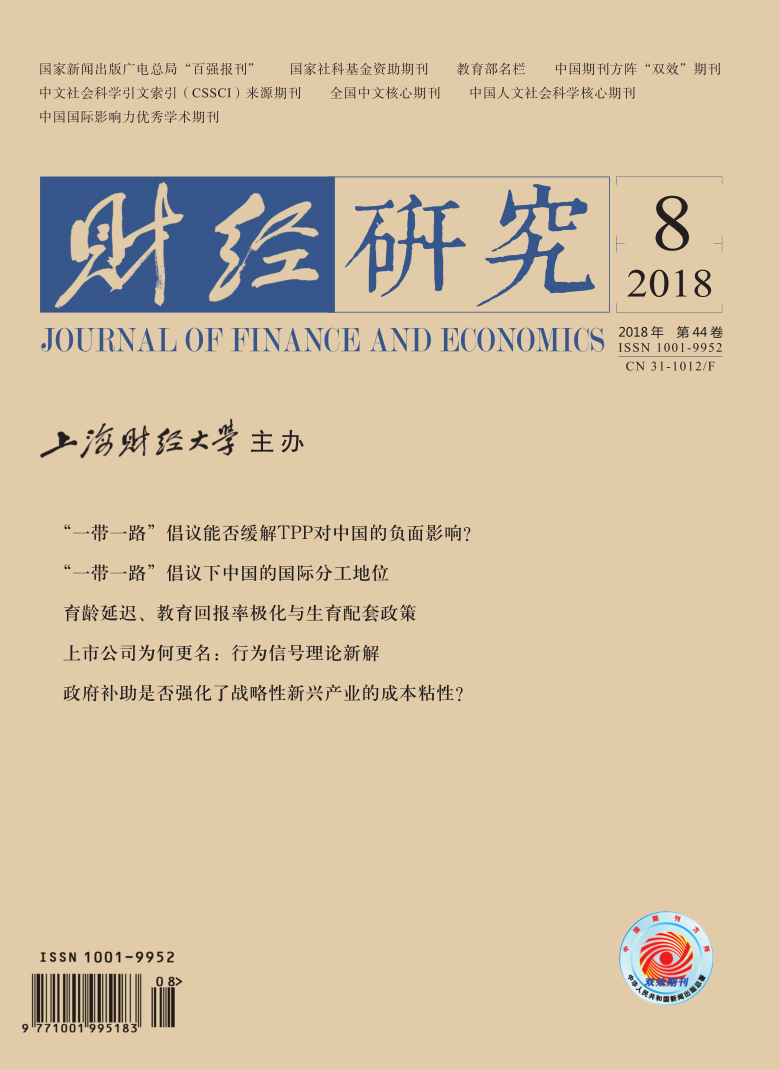在我国P2P热潮中,上市公司多伦股份曾更名为“匹凸匹”,这种跟随市场热潮的公司更名现象在国内外时有发生。上市公司为何热衷于更名?文章运用最新的行为信号理论,阐释了该现象背后的经济学原理。与传统信号不同,行为信号并不传递基本面信息,而是基于信号传递对象的心理偏差,影响非理性信号接收者的决策。研究发现,将公司名称更改为热点名词激发了投资者“凸显效应”这种心理偏差,公司管理者利用更名来传递行为信号,非理性投资者会根据该行为信号做出决策。进一步研究发现,上市公司之所以发出这种行为信号,并非源于内部人减持动机,也不是因为公司急于摆脱业绩困境,而是以更名来凸显转型发展的信号;但从业绩来看,更名的公司基本面和长期股价表现均未好转。上述证据说明,跟随潮流的更名并不是与基本面相关的传统信号,行为信号能影响投资者决策,但对公司业绩的长期影响有限。文章将行为信号理论拓展至“凸显效应”这种新型的信号机制,从公司更名角度为行为信号理论提供了实证证据。文章结果为认识和监管公司更名等基于行为信号的市场非理性行为提供了新思路。
上市公司为何更名:行为信号理论新解
摘要
参考文献
16 Bae K H, Wang W. What’s in a " China” name? A test of investor attention hypothesis[J]. Financial Management, 2012, 41(2): 429—455. DOI:10.1111/fima.2012.41.issue-2
18 Baker M, Wurgler J. Behavioral corporate finance: An updated survey[A]. Constantinides G M, Harris M, Stulz R M. Handbook of the economics of finance[C]. North-Holland, 2013.
19 Belenzon S, Chatterji A K, Daley B. Eponymous entrepreneurs[J]. American Economic Review, 2017, 107(6): 1638—1655. DOI:10.1257/aer.20141524
20 Bordalo P, Gennaioli N, Shleifer A. Salience theory of choice under risk[J]. The Quarterly Journal of Economics, 2012, 127(3): 1243—1285. DOI:10.1093/qje/qjs018
21 Bordalo P, Gennaioli N, Shleifer A. Salience and asset prices[J]. American Economic Review, 2013, 103(3): 623—628. DOI:10.1257/aer.103.3.623
22 Bordalo P, Gennaioli N, Shleifer A. Salience and consumer choice[J]. Journal of Political Economy, 2013, 121(5): 803—843. DOI:10.1086/673885
23 Clor-Proell S, Proell C A, Warfield T D. The effects of presentation salience and measurement subjectivity on nonprofessional investors’ fair value judgments[J]. Contemporary Accounting Research, 2014, 31(1): 45—66. DOI:10.1111/care.2014.31.issue-1
24 Cooper M J, Gulen H, Rau P R. Changing names with style: Mutual fund name changes and their effects on fund flows[J]. The Journal of Finance, 2005, 60(6): 2825—2858. DOI:10.1111/j.1540-6261.2005.00818.x
25 Cooper M J, Dimitrov O, Rau P R. A Rose.com by any other name[J]. The Journal of Finance, 2001, 56(6): 2371—2388. DOI:10.1111/0022-1082.00408
27 Hennessy C A, Livdan D, Miranda B. Repeated signaling and firm dynamics[J]. Review of Financial Studies, 2010, 23(5): 1981—2023. DOI:10.1093/rfs/hhq004
28 Huang X, Nekrasov A, Teoh S H. Headline salience, managerial opportunism, and over-and underreactions to earnings[R]. SSRN Working Paper, 2018.
29 John K, Williams J. Dividends, Dilution, and taxes: A signalling equilibrium[J]. The Journal of Finance, 1985, 40(4): 1053—1070. DOI:10.1111/j.1540-6261.1985.tb02363.x
30 Kahneman D, Tversky A. Prospect theory: An analysis of decision under risk[J]. Econometrica, 1979, 47(2): 263—292. DOI:10.2307/1914185
31 Kalay A, Kronlund M. The market reaction to stock split announcements: Earnings information after all[R]. SSRN Working Paper, 2014.
32 Mcnichols M, Dravid A. Stock dividends, stock splits, and signaling[J]. Journal of Finance, 1990, 45(3): 857—879. DOI:10.1111/j.1540-6261.1990.tb05109.x
33 Muscarella C J, Vetsuypens M R. Stock splits: Signaling or liquidity? The case of ADR ‘solo-splits’[J]. Journal of Financial Economics, 1996, 42(1): 3—26. DOI:10.1016/0304-405X(95)00872-C
34 Spence M. Job market signaling[J]. The Quarterly Journal of Economics, 1973, 87(3): 355—374. DOI:10.2307/1882010
引用本文
徐龙炳, 陈历轶, 邵天. 上市公司为何更名:行为信号理论新解[J]. 财经研究, 2018, 44(8): 74-87.
导出参考文献,格式为:





 7114
7114  12822
12822

